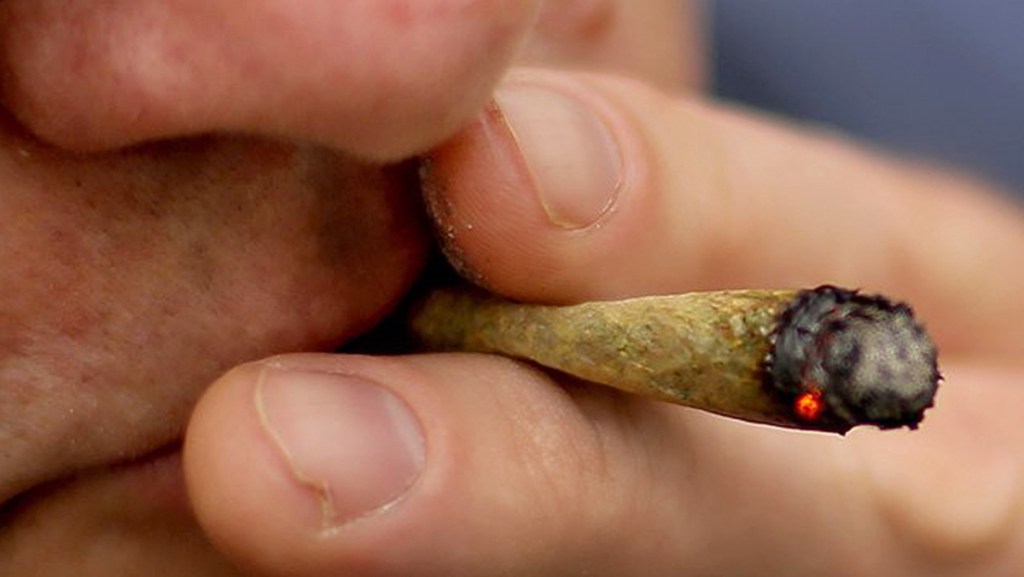U.S. drivers are 12 percent more likely to get into a fatal crash on April 20, the unofficial celebration of all things marijuana, even if they aren’t cannabis consumers, according to research published Monday.
Researchers at the University of British Columbia and University of Toronto used accident data from the U.S. National Highway Traffic Safety Administration to compare the number of drivers involved in fatal crashes after 4:20 p.m. on April 20 to the number of drivers involved in fatal crashes in each state a week before and one week later. They found an increased risk that amounted to 142 additional deaths over 25 years between 1991 and 2016, the most recent data available.
The risk is even higher among young drivers, they found – for drivers 21 or younger, the increased risk grew to 38 percent.
Data shows a Maine driver is four times as likely to have a fatal crash after 4:20 p.m. on April 20, which would put Maine among the highest-risk states. But the sample size is so small because of Maine’s small population that researchers say the findings aren’t statistically relevant. In the 25-year time frame, six Maine drivers were involved in a fatal car accident on April 20, while only three were involved in fatal crashes on April 13 or April 27.
“We just don’t have enough data to know if Maine has worse problem than anywhere else in the country,” said University of British Columbia researcher John Staples. “It was almost there, but you just don’t have a big enough sample size. Look at Texas. Instead of four times higher, like Maine, its risk was 28 percent higher, but it is a much more populous state, with more crashes. It’s a smaller degree of risk, but a bigger sample size. We can trust those numbers.”
The research published Monday in the Journal of American Medical Association Internal Medicine by Staples and Donald Redelmeier of University of Toronto does not consider whether the April 20 risk to a driver changes if they are in a state that has legalized cannabis, Staples said. Each U.S. state varies, making it difficult to categorize and compare state risks by level of legalization, he said.
The research does not consider whether cannabis played a direct role in the April 20 fatal crashes, Staples said, because a police drug report – which combines lab tests and the impression of the officer – was included in the Fatality Analysis Reporting System for only about a third of the 1,369 drivers involved in a deadly April 20 accident over that time period. More importantly, because cannabis lingers in the body for so long, a positive lab test does not mean the person was impaired.
Maine does not have large 4/20 celebrations like those held in Boulder, Colorado; San Francisco and New York or Ottawa, Montreal or Vancouver, where thousands of people have come together to light up at 4:20 p.m. In Maine, 4/20 celebrations before legalization were generally muted. People occasionally gathered in Monument Square to hand out free joints.
While it is legal to grow up to six plants and possess up to 2.5 ounces of marijuana for personal use, Maine prohibits consumption of marijuana in public places and is still working on setting up the regulatory framework for a recreational marijuana retail market. While its 4/20 celebrations have been private, Maine is known for holding large, outdoor, marijuana-friendly summer concerts and festivals that could have similar traffic impacts as other states’ pot events.
Staples said the study should prompt 4/20 celebration event organizers to consider ways to make sure celebrants, and those who will share the roads with them, make it home safely. When Canada legalizes recreational marijuana use this summer, almost 100 million people in North America will live in a place where it is legal to consume cannabis, Staples said.
“It’s going to be really important for both the U.S. and Canada to figure out what that means for public safety as well as public health,” Staples said.
The idea for the research came out of Staples’ time spent working at hospitals in Vancouver, British Columbia, where staff there learned to prepare for a wave of patients connected to the large 4/20 celebration that happens in that city every year. Not all patients had attended the celebration, nor consumed cannabis, but the staff of both of the city hospitals knew their intake numbers would spike on that day, and some of that surge was linked to the celebration.
But it’s difficult to know how closely the two are linked because U.S. federal prohibition on marijuana limits the types of research that can be done on it, Staples said.
Penelope Overton can be contacted at 791-6463 or at:
poverton@pressherald.com
Twitter: PLOvertonPPH
Send questions/comments to the editors.




Success. Please wait for the page to reload. If the page does not reload within 5 seconds, please refresh the page.
Enter your email and password to access comments.
Hi, to comment on stories you must . This profile is in addition to your subscription and website login.
Already have a commenting profile? .
Invalid username/password.
Please check your email to confirm and complete your registration.
Only subscribers are eligible to post comments. Please subscribe or login first for digital access. Here’s why.
Use the form below to reset your password. When you've submitted your account email, we will send an email with a reset code.